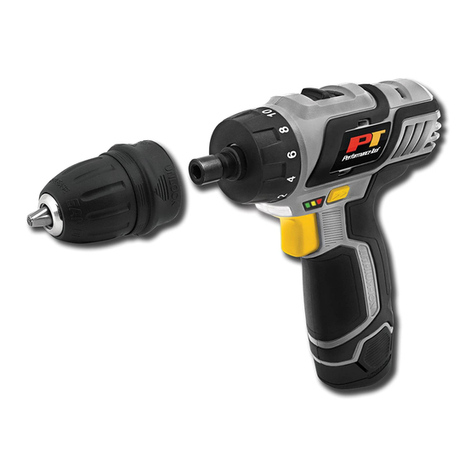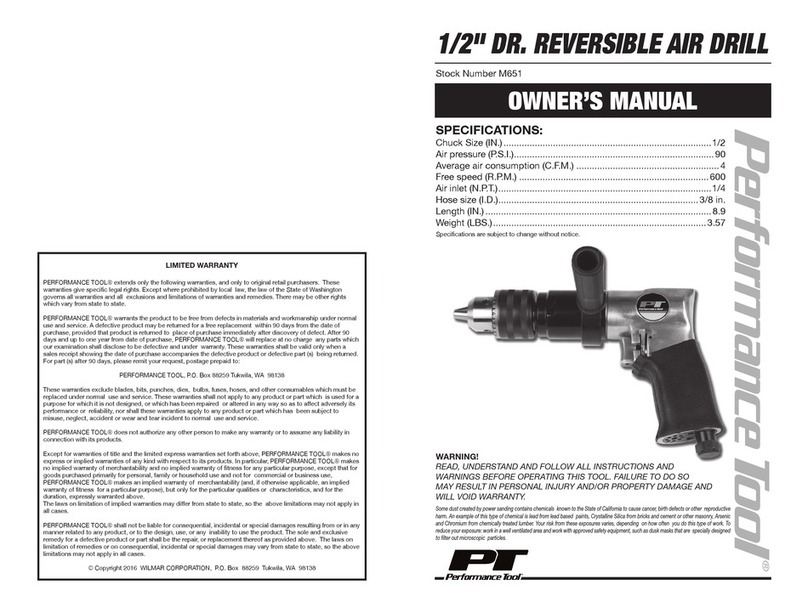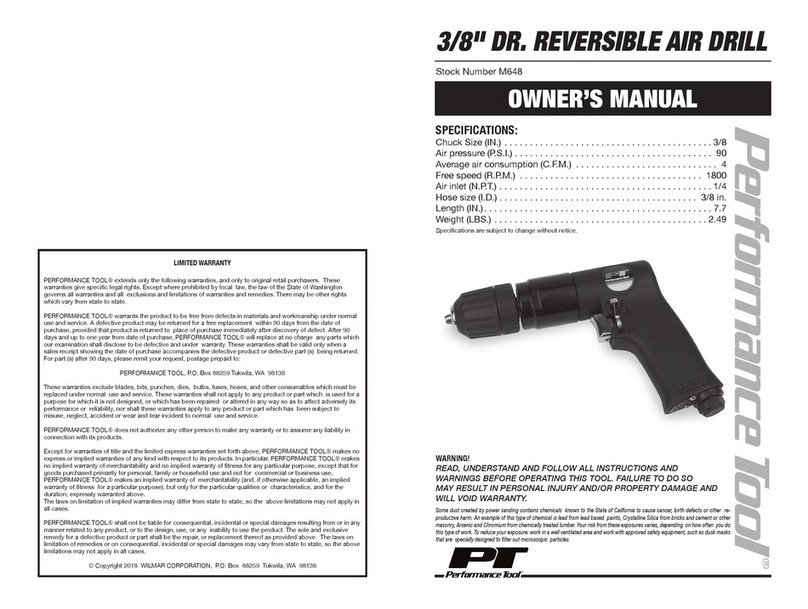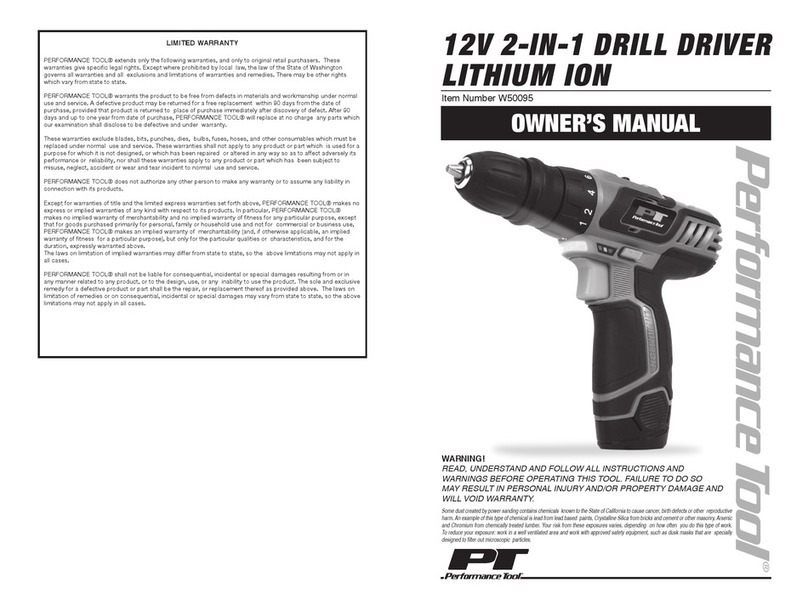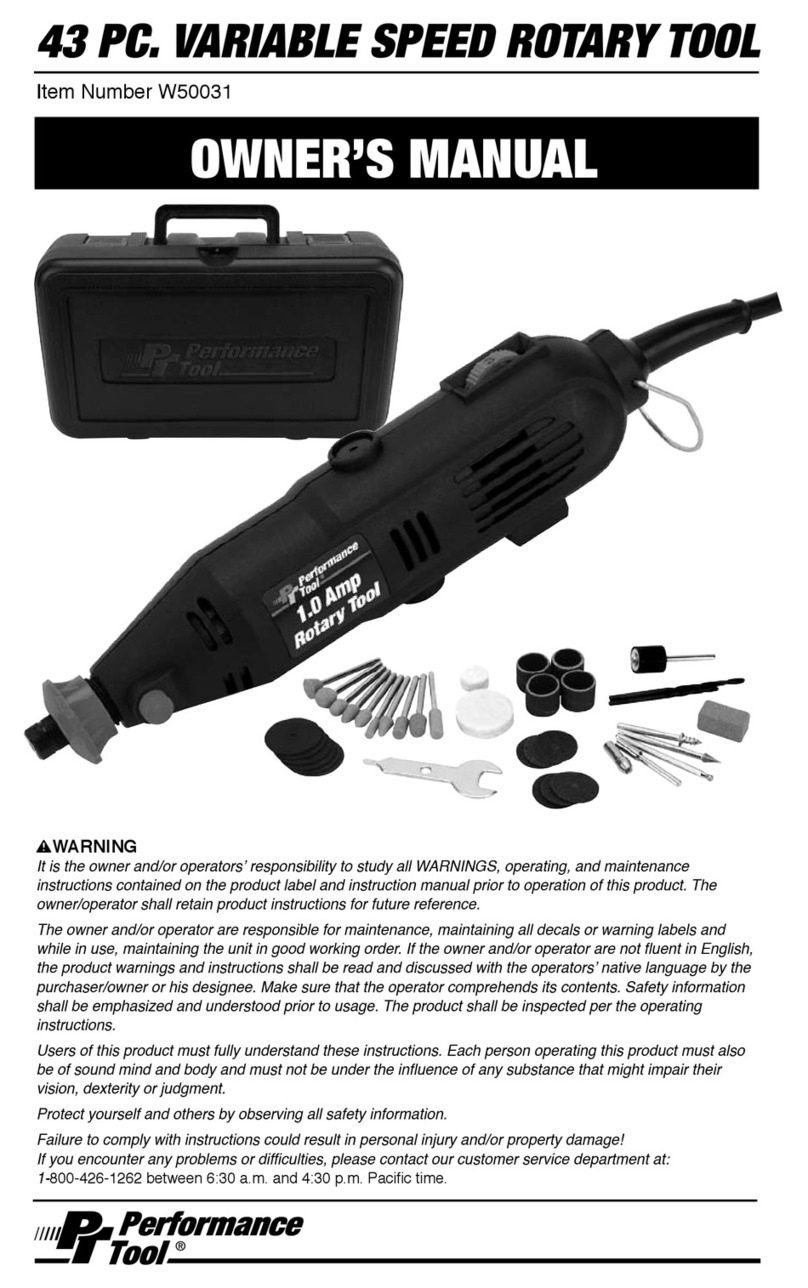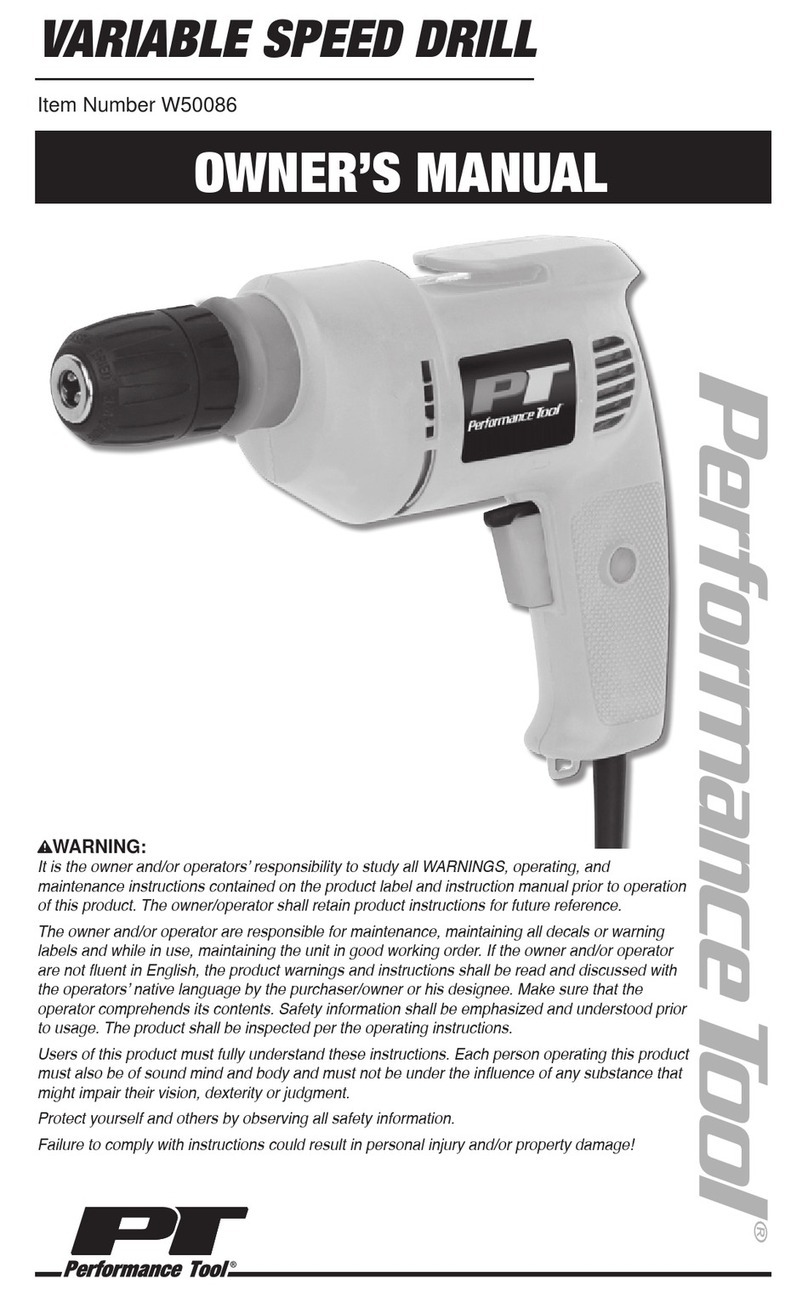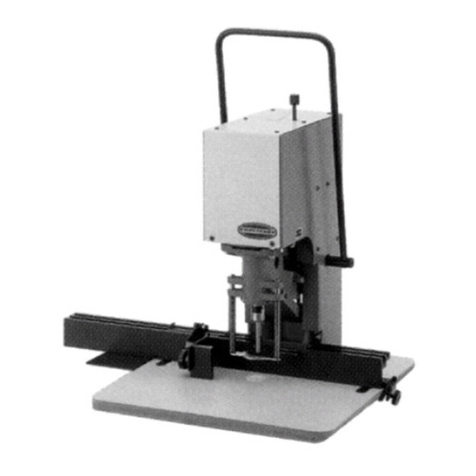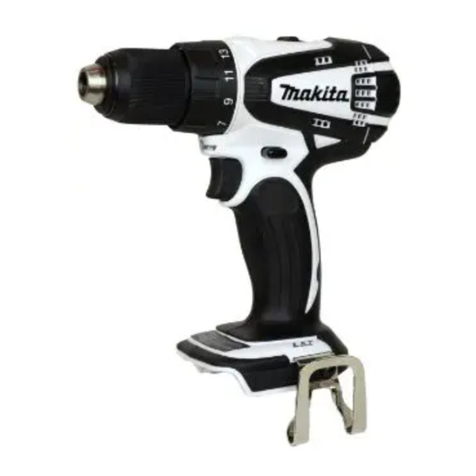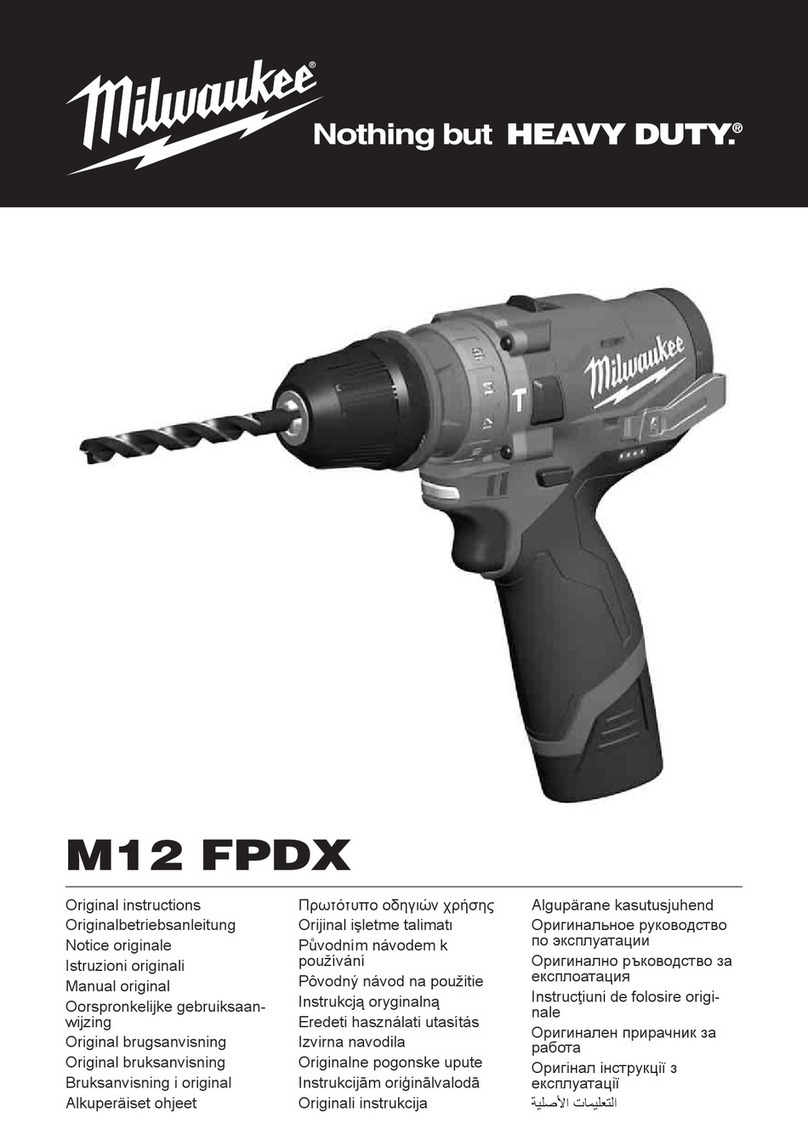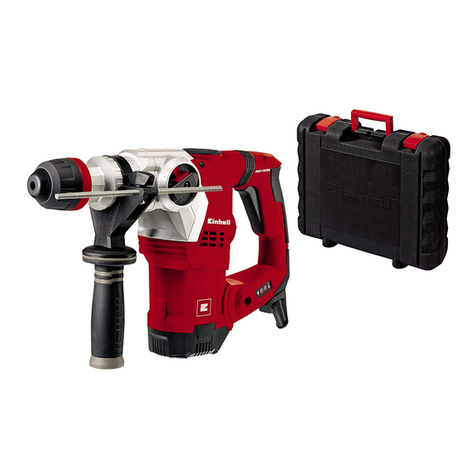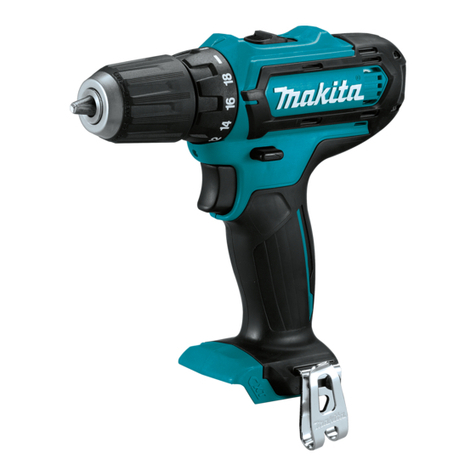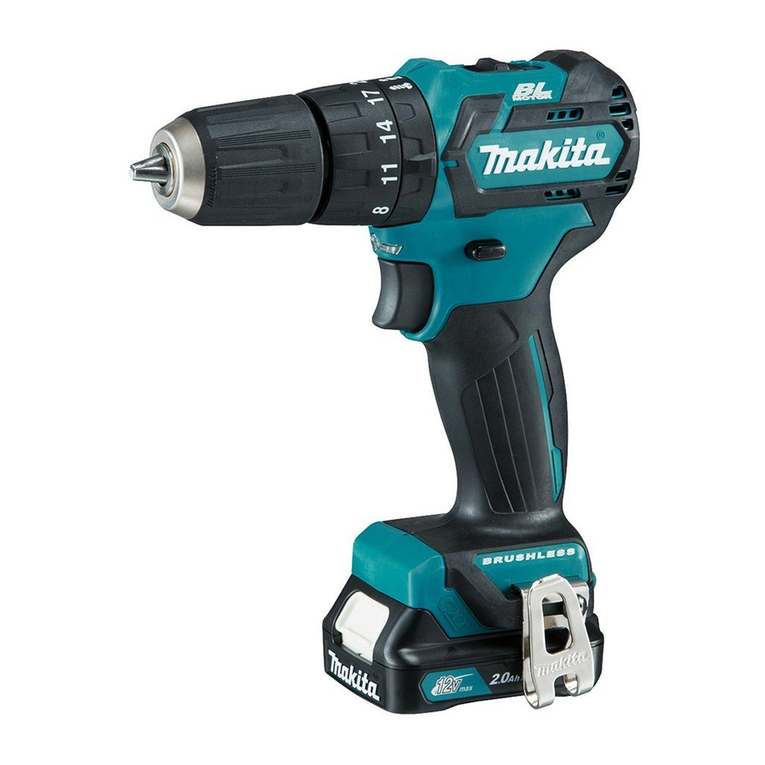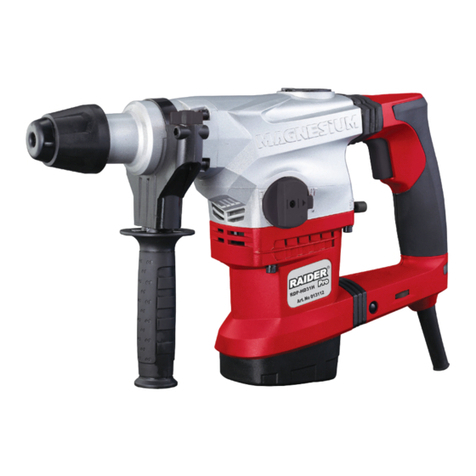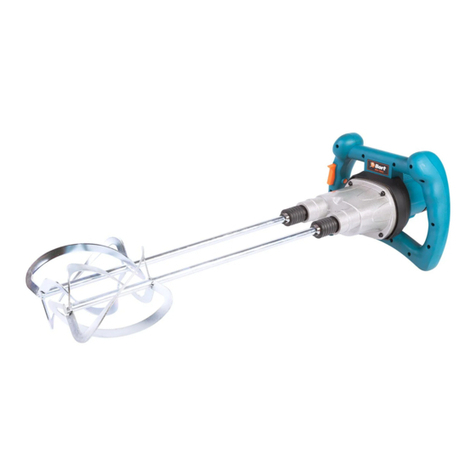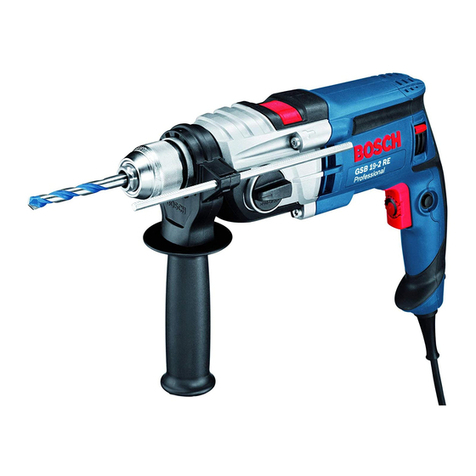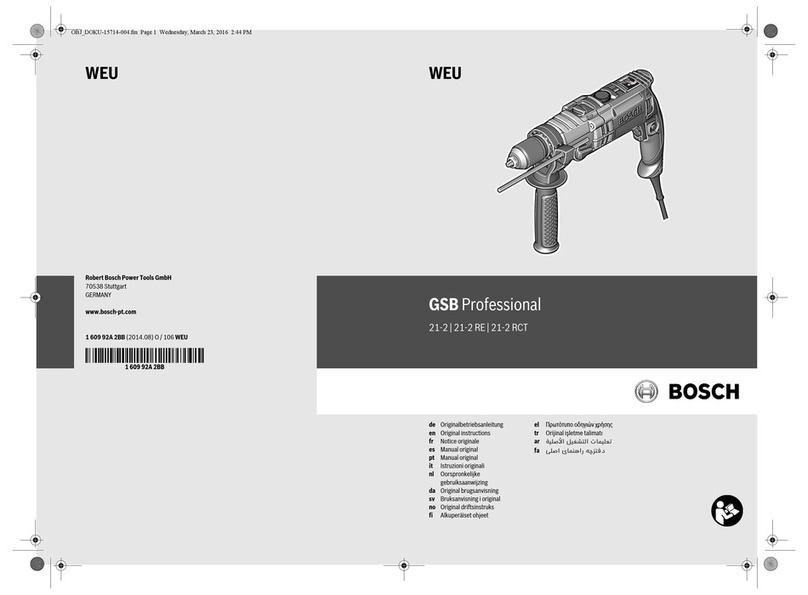
IMPORTANT SAFETY INFORMATION
while tired or under the inuence of drugs, alcohol, or
medication. A moment of inattention while operating this
product may result in serious personal injury. Keep proper
footing and balance at all times. Do not reach over or
across running machines, hoses, cords, etc.
6.
Dress properly. Do not wear loose clothing or jewelry. Keep
your hair, clothing, and gloves away from moving parts. Loose
clothes, jewelry or long hair can be caught in moving parts.
7.
Inspect before every use; do not use if parts are loose
or damaged.
8. Do not alter this product in any way.
9. Use the right tool for the job. Do not attempt to force a small
tool or attachment to do the work of a larger industrial tool.
Don’t use a tool whose performance is not adequate for
your work. Do not modify this tool and do not use this tool
for a purpose for which it was not intended.
10. Power tool plugs must match the outlet. Never modify
the plug in any way. Do not use any adapter plugs with
earthed (grounded) power tools. Unmodied plugs and
matching outlets will reduce risk of electric shock.
11. Avoid body contact with earthed or grounded surfaces
such as pipes, radiators, ranges and refrigerators. There
is an increased risk of electric shock if your body is
earthed or grounded.
12.
Do not expose power tools to rain or wet conditions. Water
entering a power tool will increase the risk of electric shock.
13. Do not abuse the cord. Never use the cord for carrying,
pulling or unplugging the power tool. Keep cord away
from heat, oil, sharp edges or moving parts. Damaged or
entangled cords increase the risk of electric shock.
14. When operating a power tool outdoors, use an extension
cord suitable for outdoor use. Use of a cord suitable for
outdoor use reduces the risk of electric shock.
15. If operating a power tool in a damp location is unavoid-
able, use a ground fault circuit interrupter (GFCI)
protected supply. Use of a GFCI reduces the risk of
electric shock.
16. Before using battery pack, please read carefully all
instructions and cautionary markings on battery pack,
battery charger and product using battery. Do not inciner-
ate the battery pack even if it is severely damaged or is
completely worn out. The battery pack can explode.
17. Do not carry battery packs in aprons, pockets, or tool
boxes, product kit boxes, drawers, etc. with loose metal
objects. Battery pack terminals could be short-circuited
causing damage to the battery pack, severe burns or re.
18. The battery pack is Nickel-Cadmium (Ni-Cad) and is
considered to be a toxic material by the Environmental
Protection Agency. Before disposing of damaged or worn
out Ni-Cad battery packs, check with your State Envi-
ronmental Protection Agency to nd out about special
restrictions on the disposal of these battery packs.
19. The battery is not fully charged. Before rst use, the
battery pack requires 8-10 hours charge time to be fully
charged. Subsequent recharging needs 3-5 hours for the
battery to be fully charged.
20. Always switch to a fresh battery when tool performance
begins to diminish. Severe heat is most destructive to a
battery; the more heat generated, the faster the battery
loses power. A battery that gets too hot can have a
shortened life.
21.
Never over-discharge a battery by using the tool even
after tool performance has decreased. Do not attempt to
discharge a tool’s battery by continuing to pull on the tool
trigger. When tool performance begins to diminish, stop
the tool and recharge the battery for optimal performance.
22. Charge battery pack at ambient temperatures between
50° F -104° F. Store tool and battery pack in locations
where temperatures will not exceed 120°F. This is
important to prevent serious damage to the battery cells.
23. Abattery operated tool with integral batteries or a
separate battery pack must be recharged only with the
specied charger for the battery. A charger that may be
suitable for one type of battery may create a risk of re
when used with another battery. Use battery operated
tool only with specically designated battery pack. Use of
any other batteries may create risk of re.
24. When battery pack is not in use, keep it away from other
metal objects, like paper clips, coins, keys, nails, screws
or other small metal objects, that can make a connec-
tion from one terminal to another. Shorting the battery
terminals together may cause burns or a re.
25. Under abusive conditions, liquid may be ejected from
the battery; avoid contact. If contact accidentally occurs,
ush with water. If liquid contacts eyes, additionally seek
medical help. Liquid ejected from the battery may cause
irritation or burns.
26. Prevent accidental starting. Ensure switch is in the “OFF”
position before connecting to power source and/or bat-
tery pack, picking up or carrying the tool. Carrying power
tools with your nger on the switch or energizing power
tools that have the switch “ON” invites accidents.
27. Do not use the power tool if the switch does not turn it on
and off.Any power tool that cannot be controlled with the
switch is dangerous and must be repaired.
28.
Have your power tool serviced by a qualied repair person
using only identical replacement parts. This will ensure
that the safety of the power tool is maintained. Follow
instructions in the Maintenance section of this manual.
Use of unauthorized parts or failure to follow Maintenance
Instructions may create a risk of shock or injury.
29.
Disconnect the plug from the power source and/or the battery
pack from the power tool before making any adjustments
or changing accessories. Such preventive safety measures
reduce the risk of starting the power tool accidentally.
30. Maintain power tools. Check for misalignment or bind-
ing of moving parts, breakage of parts and any other
condition that may affect the power tool’s operation. If
damaged, have the power tool repaired before use. Many
accidents are caused by poorly maintained power tools.
31. Keep cutting tools sharp and clean. Properly maintained
cutting tools with sharp cutting edges are less likely to
bind and are easier to control.
32. Use the power tool, accessories and tool bits etc. in
accordance with these instructions, taking into account
the working conditions and the work to be performed.
